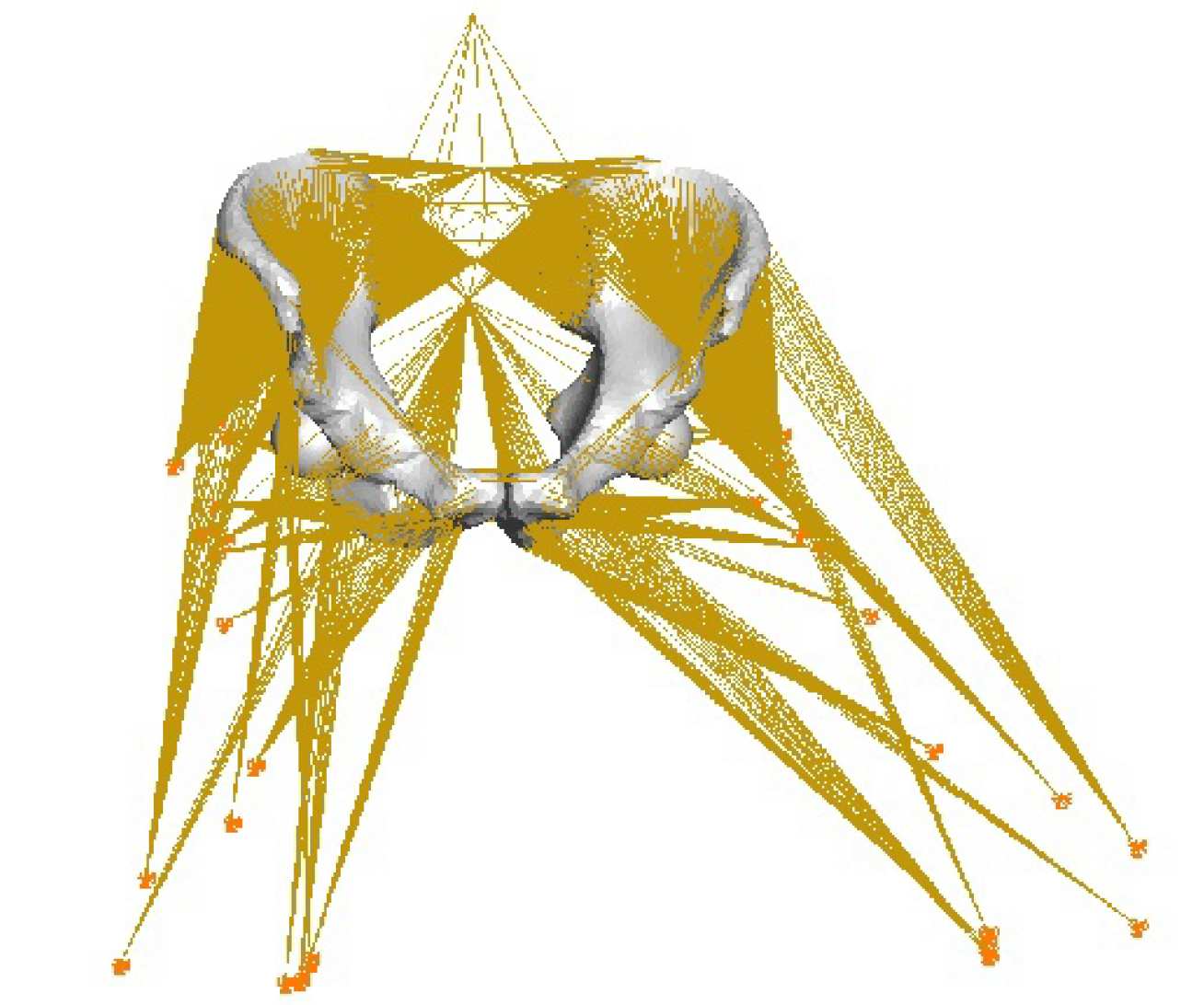Pelvis
The aim of this project is to assess the behaviour of the pelvis in a more physiological manner than can be achieved using traditional fixed boundary condition finite element modelling. This is done through the use of a free boundary condition model in which muscular and ligamentous contributions to the behaviour of the pelvic construct are explicitly included. The project methodologies are also being applied to a related project looking at free boundary condition modelling of the femur.
The developed model is currently being used to biomechanically assess alternative surgical approaches to hip arthroplasty. It is also planned that the techniques used to develop the model will be used in a more detailed study of the behaviour of the natural acetabulum, as well as in the development of novel acetabular implant designs.

The central rational behind the free boundary condition model is to avoid the use of rigid constraints on the bony constructs of the pelvis; instead applying flexible boundary conditions to the cortex of the pelvic bones through spring elements representative of the muscles crossing the hip joints, and the ligaments which together with the pelvic bones and sacrum form the pelvic ring. In the case of the muscles fixed boundary conditions are applied distant to the pelvic bones at reference points representing muscle insertion points on the lower limb.
Publications
Full details of the model are given in:
- Phillips, ATM, Pankaj, P, Howie, CR, Usmani, AS, and Simpson, AHRW, Finite Element Modelling of the Pelvis: Inclusion of Muscular and Ligamentous Boundary Conditions, Medical Engineering & Physics, 29(7):739-748, 2007


